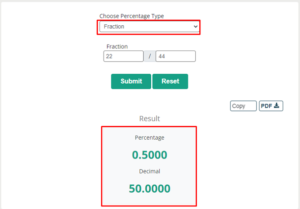Sales conversion rates and lead values are two important concepts for any business. These metrics are important for optimizing the sales process and maximizing revenue. Furthermore, these help businesses understand how effectively they are converting leads into customers.
By mastering these concepts, you can make more informed decisions, optimize your sales strategies, and ultimately drive your business toward greater success. Let’s dive into these concepts and how you can easily calculate them.
Before we dig into the art of explaining, calculating and improving sales conversion rates, it’s important to explore what a conversion rate represents.
What is the Sales Conversion rate?
Sales conversion rate, also known as deal conversion rate. It is a way to track the performance of sales. It may detect the effectiveness of campaigns, channels, messaging plans, tools, and more. This metric can be a key sign that sales and marketing teams use to see how well their strategy is working.
How to Calculate the Sales Conversion Rate?
Calculation of sales conversion rate depending on your unique business goals and objectives. For example, if you run an online store, a conversion could be a customer making a purchase. On the other hand, if you’re in the software-as-a-service (SaaS) industry, a conversion might be someone signing up for a free trial.
Steps to Calculate Sales Conversion
The below steps are involved in calculating the sales conversions
-
- Count the lead: First, you must know how many leads you have.
- Count Conversion: Count how many of those leads made a purchase.
- Use the Formula: Sales Conversion Rate = (Amount of Conversions / Number of Leads) ×100
The above process is for manual calculation but this process is time-consuming. Furthermore, by this process the chance of inaccuracy increases. However, to avoid these problems we can use the online tools.
One of the best online tools for this purpose is the Percentage calculator by Allmath. This tool allows you to quickly and accurately calculate percentages, which is useful for determining conversion rates and other key metrics.
This tool is easy to use. Just put the value of the Amount of conversion and Number of leads after selecting the fraction mode and get the desired answer within seconds.
One of the best features of this tool is, that you can download and copy the result, and share it easily with other files.
What Is Lead Value?
Lead value is also known as customer value. It is the average amount of money you make from each potential customer. It’s important because it helps you determine how much you can expect to earn from each lead and how much you should spend to get new leads.
How to calculate the Lead Value?
Calculating lead value involves determining the total revenue generated from all leads over a specific period and dividing that by the number of leads in that period.
Here are the steps:
- Determine Total Revenue from Leads: Sum up the total revenue generated from all leads over a specific period.
- Count the Number of Leads: Identify the total number of leads generated in that same period.
- Use the Formula: Lead Value = Total Revenue / Number of Leads
Why sales conversion rates and lead value are important?
Understanding your sales conversion rate and lead value helps in several ways:
- Performance Evaluation: Measure the effectiveness of your sales and marketing strategies.
- Budget Allocation: Allocate your marketing budget more effectively by knowing how much you can spend to get a new lead.
- Revenue Forecasting: Predict future revenues based on lead generation and conversion rates.
- Strategic Planning: Make informed decisions on where to focus your sales and marketing efforts for maximum return on investment (ROI).
How to improve sales conversion rates and Lead value?
Consider the following strategies to improve or increase the sales conversion and lead value:
- Optimize Sales Funnel: Confirm each stage of your sales is optimized for maximum conversion.
- Personalize Marketing Efforts: Use targeted and personalized marketing campaigns to increase engagement and conversion rates.
- Improve Lead Quality: Focus on generating high-quality leads that are more likely to convert.
- Improve Customer Experience: Provide excellent customer service to increase the likelihood of leads becoming paying customers.
Examples to calculate the Sales conversion and Lead value:
In this section, we’ll solve the practical examples of these metrics for more understanding of this topic.
Example 1: Calculating Sales Conversion Rate
Let’s say you run an online store. Last month, you received 1,000 leads (visitors to your site), and 100 of them made a purchase.
- Count the Leads: You had 1,000 leads.
- Count the Conversions: 100 leads made a purchase.
- Use the Formula:
Sales Conversion Rate= (Amount of Conversions/ Number of Leads) ×100
Sales Conversion Rate = (100/1000) ×100=10%
Sales Conversion Rate = (1000100) × 100 = 10%
So, your sales conversion rate for last month is 10%.
Example 2: Calculating Lead Value
Now, let’s calculate the lead value. Suppose your online store made a total of $50,000 in revenue from those 1,000 leads last month.
- Determine Total Revenue from Leads: Your total revenue is $50,000.
- Count the Number of Leads: You had 1,000 leads.
- Use the Formula:
Lead Value = Total Revenue / Number of Lead
Lead Value = 50,000 / 1000
Lead value = 50
Each lead is worth $50 to your business.
Conclusion
We explored the concepts of sales conversion rates and lead values. We provided step-by-step instructions for calculating these metrics, highlighting their importance in optimizing sales processes and maximizing revenue. Tools like the Percentage Calculator can simplify these calculations, making them quick and accurate.







